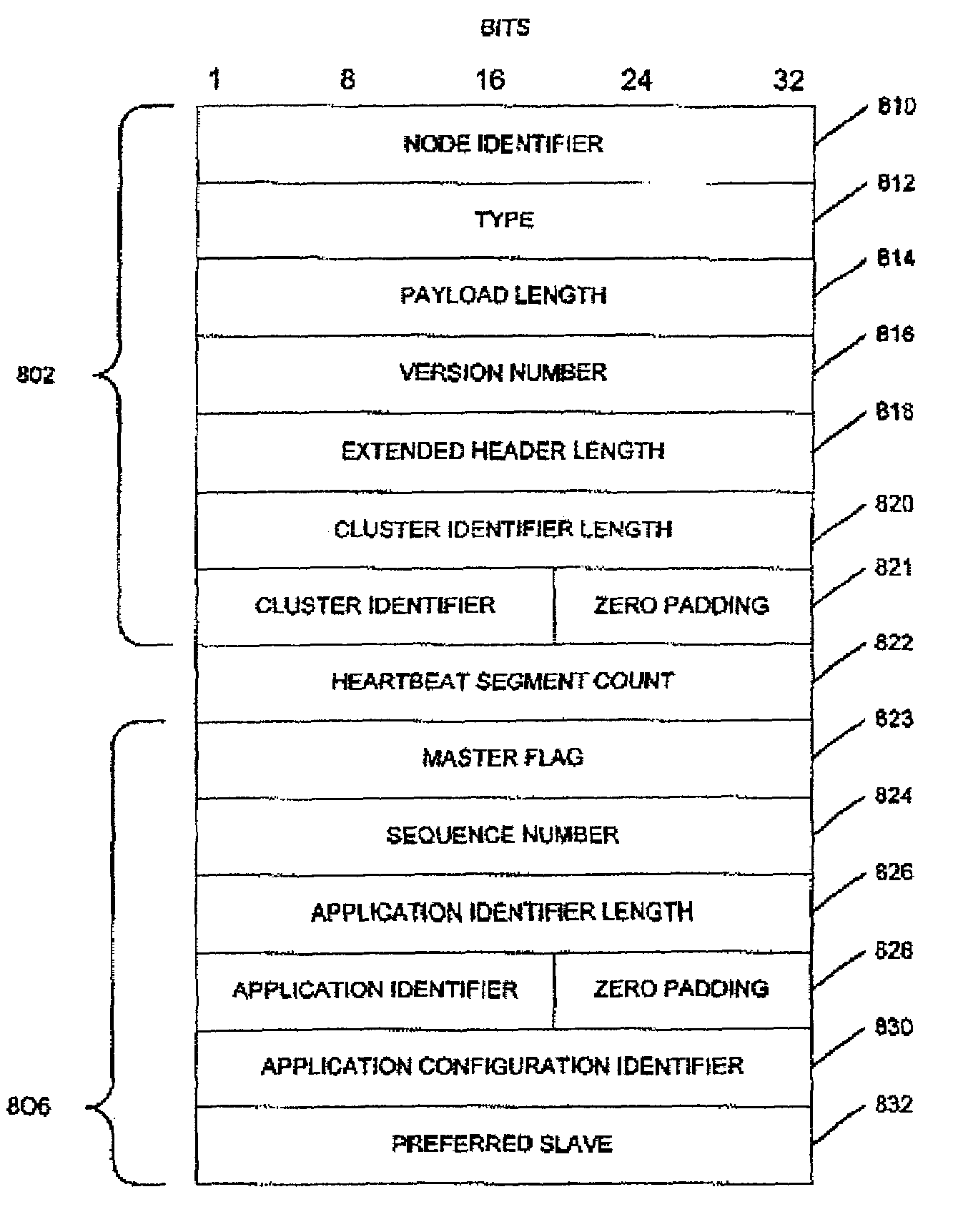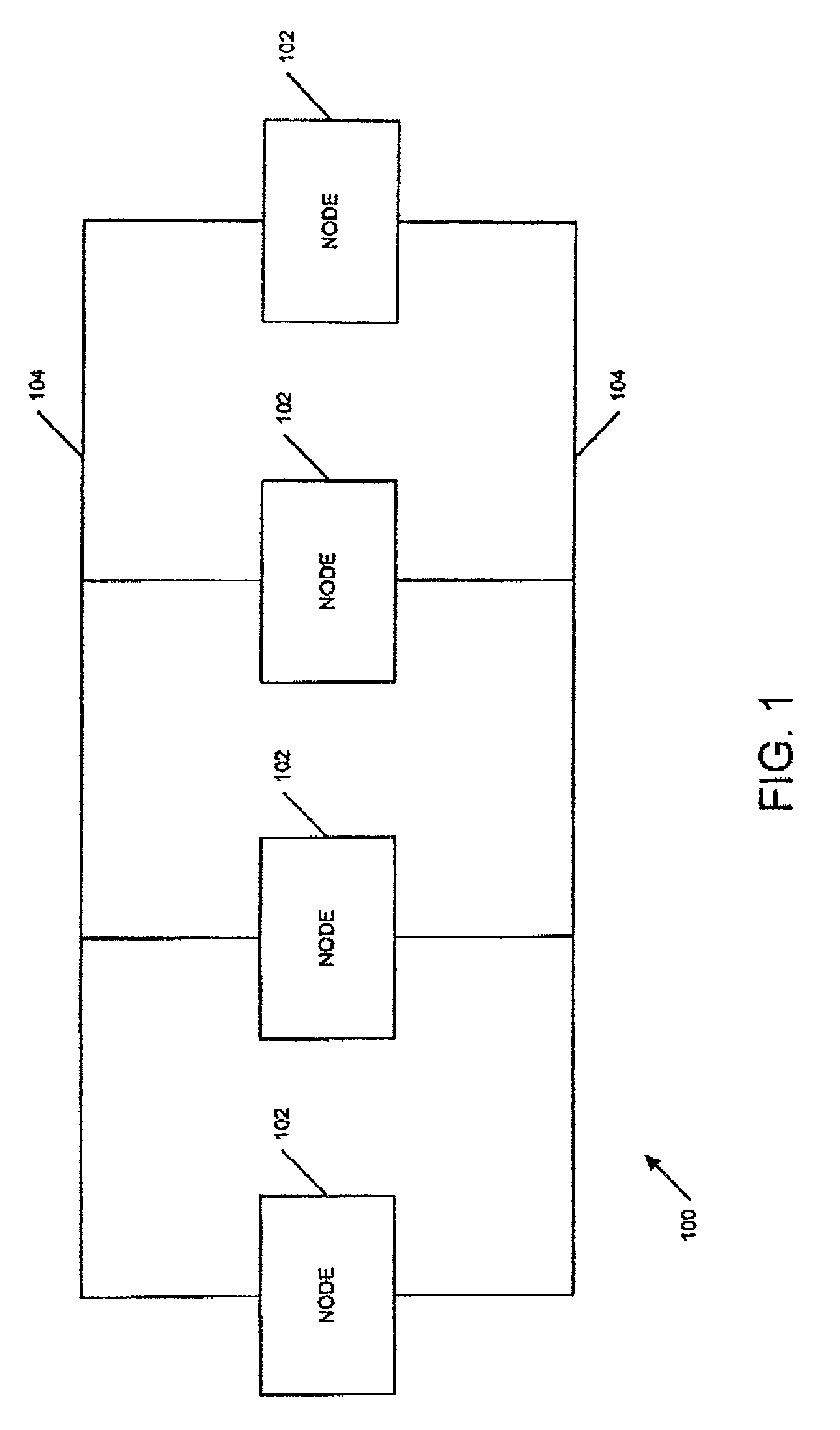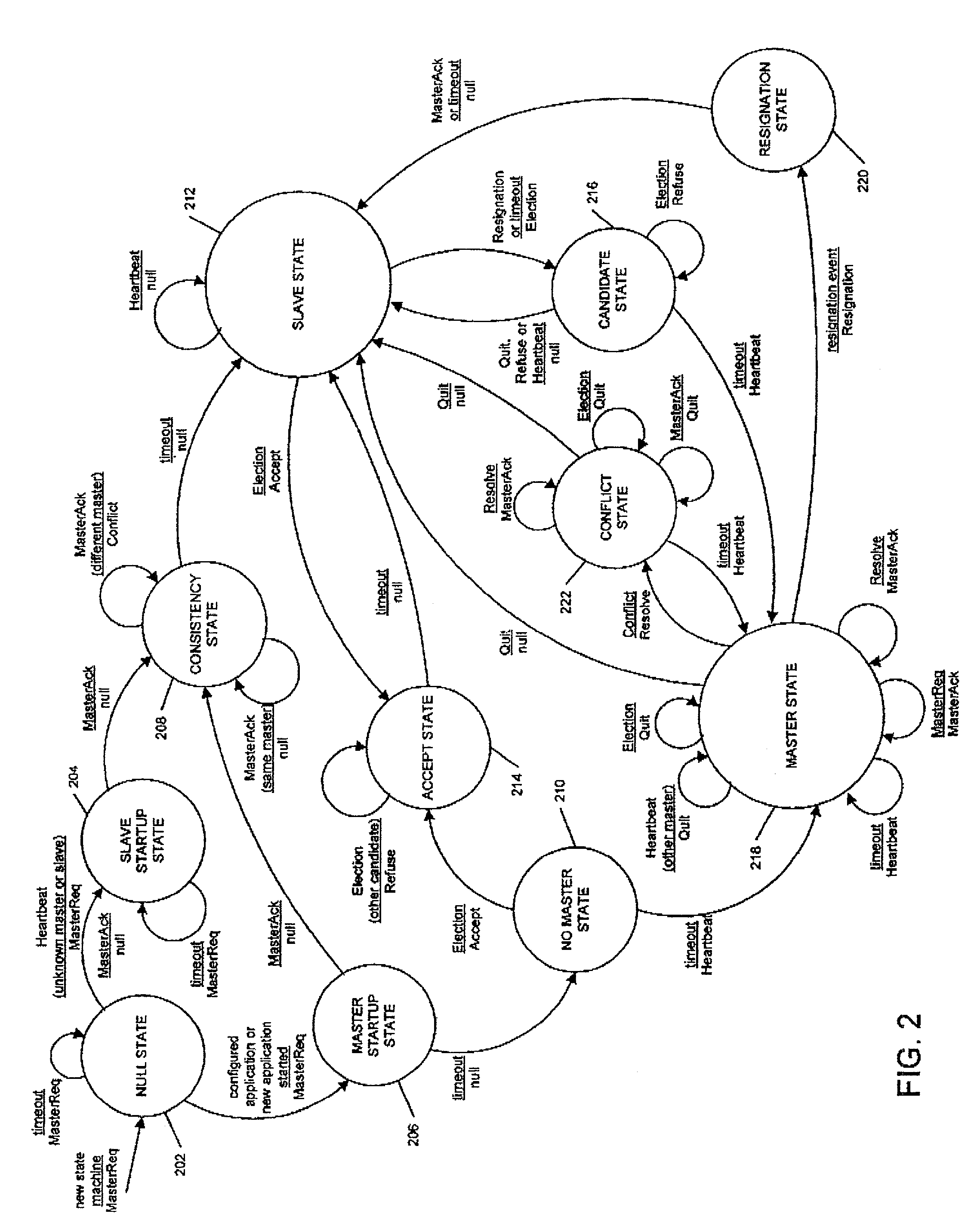Method and apparatus for exchanging heartbeat messages and configuration information between nodes operating in a master-slave configuration
a configuration information and heartbeat technology, applied in the field of method and apparatus for exchanging heartbeat messages and configuration information between multiple, networked nodes, can solve the problems of system users' perception of significant system downtime, high cost, and inability to recover from failures much longer
- Summary
- Abstract
- Description
- Claims
- Application Information
AI Technical Summary
Benefits of technology
Problems solved by technology
Method used
Image
Examples
Embodiment Construction
[0026]Various embodiments of the present invention provide methods for operating a node, within a networked computer system, which is capable of supporting communications with other nodes relating to operating multiple application instances in a master-slave configuration. The node maintains a state diagram for each application instance currently running in the master-slave configuration on the node and on the other nodes. In addition, the node listens for new application instances that are discovered on the node and on the other nodes. The nodes can be interconnected using multiple networks.
[0027]Each node occasionally sends out a “Heartbeat” message, which indicates the status of each master and / or slave that the node is operating or maintaining. In one embodiment, each Heartbeat message can include the status information for multiple masters and / or slaves. In addition, each node determines whether each application instance's configuration information is current, and requests new ...
PUM
 Login to View More
Login to View More Abstract
Description
Claims
Application Information
 Login to View More
Login to View More - R&D
- Intellectual Property
- Life Sciences
- Materials
- Tech Scout
- Unparalleled Data Quality
- Higher Quality Content
- 60% Fewer Hallucinations
Browse by: Latest US Patents, China's latest patents, Technical Efficacy Thesaurus, Application Domain, Technology Topic, Popular Technical Reports.
© 2025 PatSnap. All rights reserved.Legal|Privacy policy|Modern Slavery Act Transparency Statement|Sitemap|About US| Contact US: help@patsnap.com



